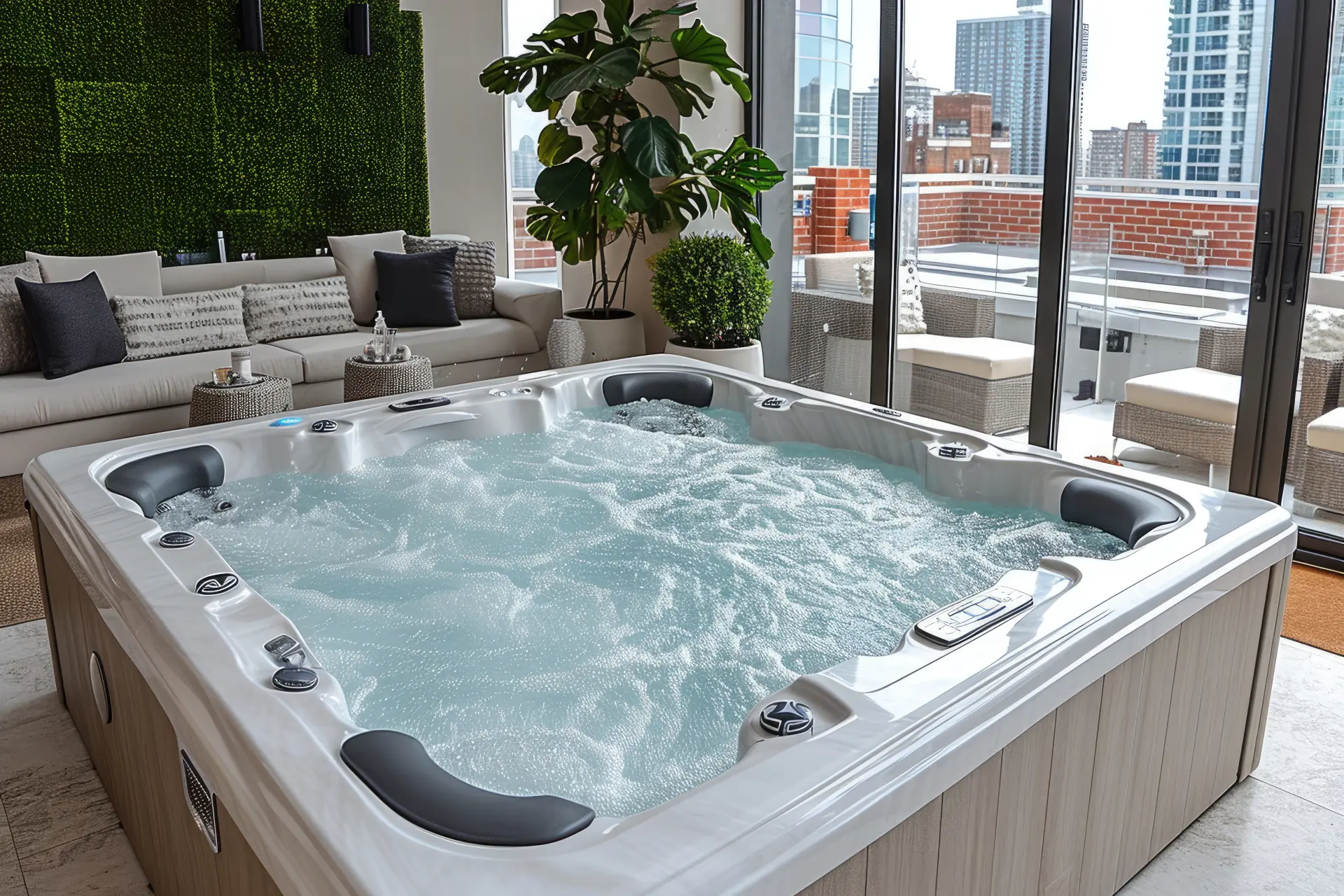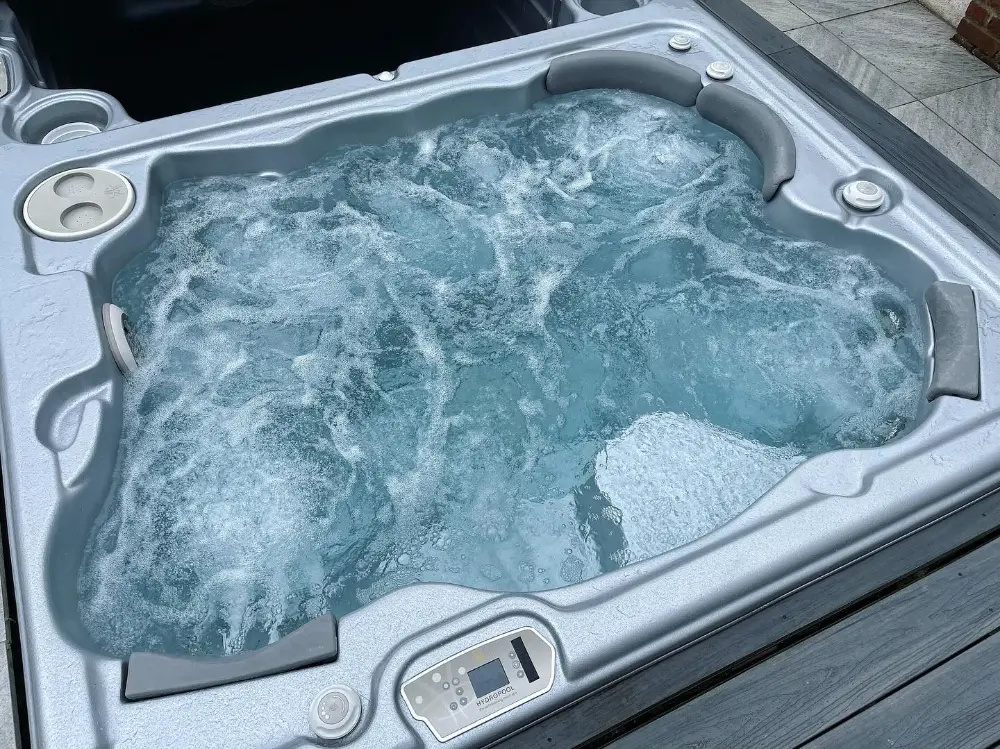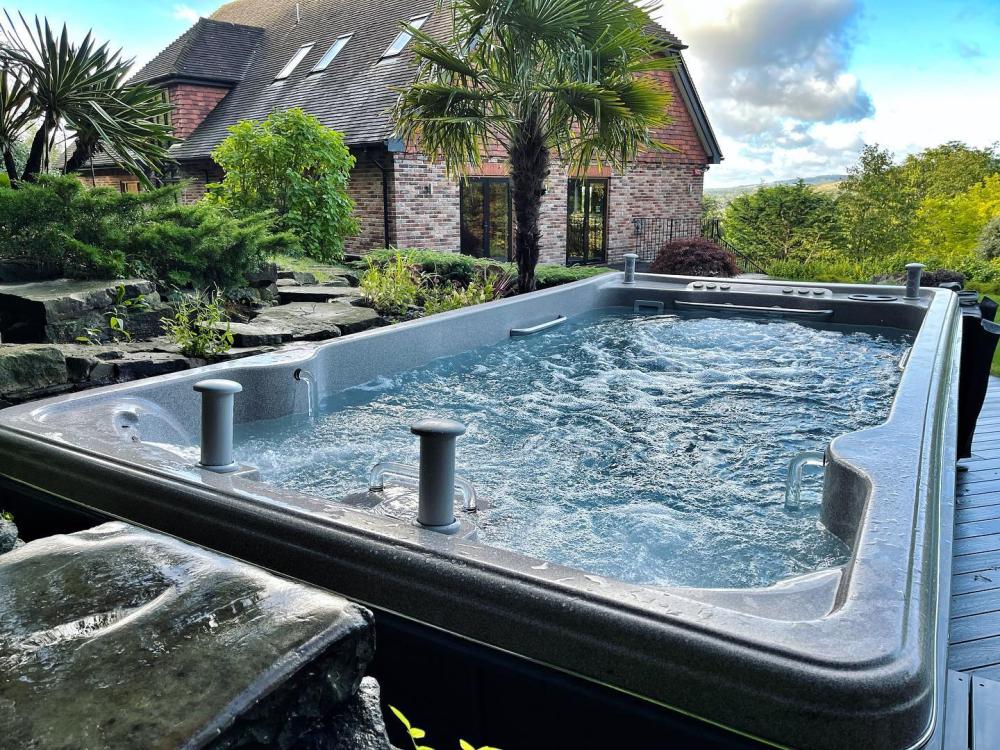Daily Hot Tub Care Checks
Daily hot tub care checks should be quick, consistent habits that keep your water safe, clear, and ready to use. Ideally, you should use a test strip and confirm the chlorine or bromine levels before dosing the water after each soak, so any residuals rebound before the next use. The chlorine levels should be at 3-5 mg/L (ppm), and the bromine levels should be at 4-6 mg/L.
Additionally, you can also check the pH and alkalinity levels while you’re there. The pH should be at 7.2-7.8, and the alkalinity levels should be at 80-120 mg/L. You don’t need to adjust these levels every day, but catching any drifting pH levels can prevent irritation, odours and corrosion.
You should also check your tub's circulation and filtration every day and ensure the programmed cycle runs at least 2 to 4 hours once a day. You can also run the pumps with the jets open for 5 to 10 minutes to cycle the water and release any trapped air.
Seasonal Maintenance and Servicing
Seasonal maintenance and servicing are essential for keeping a hot tub in peak condition. Over time, biofilm and scale can build up inside the pipework, and simple chemical solutions might not be able to remove the entire blockage. Seasonal servicing includes a line purge and a deep clean service that can remove hidden contaminants that can cause cloudy water, bad smells and inefficient sanitiser levels.

A technician can inspect and clean the heater, pump, and circulation system, which can help your hot tub run smoothly and reduce strain. Additionally, having worn or clogged filters replaced and having the circulation settings checked by a professional can help improve the cleanliness of your water and reduce the need for excessive chemical applications.
Seasonal servicing can also extend your hot tub equipment's lifespan. Scale formations in hard-water areas can shorten the lifespan of your tub's heaters and pumps, while dampness in soft-water areas can cause the seals, gaskets, and covers to deteriorate. A seasonal maintenance service can catch these early signs of wear and tear, and prevent your hot tub from breaking.
Draining and Refilling the Hot Tub
Draining and refilling a hot tub isn't something you should do every day, but it should be part of your hot tub care maintenance routine. Many owners focus only on adding chemicals or checking the heater; however, overlooking when the water needs changing is one of the biggest causes of cloudy, smelly or difficult-to-balance hot tubs. By keeping a record of when you last drained and refilled your hot tub, you can avoid larger problems later on.
Hot tubs are small bodies of hot, aerated water, and every soak adds sweat, oils, cosmetics, and detergents that the sanitiser has to break down. Over time, these dissolved solids can build up in the water and make the chemicals less effective. Even if you test and balance the water daily, if there's a blockage or too many contaminants present in the water, there's a risk of creating odours, foaming water or irritating your skin.
Cleaning Filters and Jets
Cleaning the filters and jets should be a core part of your daily hot tub maintenance checks because they are the first line of defence against dirt, debris and contaminants. While you don’t need to deep-clean them every day, making it a part of your daily routine or inspections ensures that these components stay effective.
Hot tub filters constantly trap hair, leaves, grit, and body oils, and if they become clogged, your water flow will be reduced, which can cause cloudy water, poor sanitisation and circulation, and even heater issues. During the colder months, a reduction in water flow can also trigger “FLO” or “HL” error codes, which can shut down the heater and leave you with cold water. By quickly inspecting the filters each day, rinsing away any visible debris, and ensuring they are seated correctly, you can avoid these common issues.

Over time, oils, biofilm, and limescale can also build up inside the jets. Blocked jets can reduce your water pressure, which can cause uneven massages and cause the water to become contaminated and smelly. Running all the jets for a few minutes every day with the air controls closed can help flush the lines, maintain circulation, and reveal any hidden issues.
By paying attention to the filters and jets, you can catch small issues early on. For example, if the water looks cloudy or if the flow feels weak, you can rinse the filter immediately rather than wait for a scheduled clean. In softer-water areas, where foaming is more common, jets are more prone to residue build-up, so flushing the jets frequently can keep the waterline scum and foam at bay.
For long-term care, the filters should be deep-cleaned once a month with a proper filter cleaner and replaced every 12 to 18 months. On the other hand, the jets should be cleaned and purged every 3 to 4 months in order to remove any hidden biofilm.
At The Hot Tub Engineer, we can keep your hot tub crystal-clear, safe, and ready to use. We provide routine water testing and balancing, deep cleans and repair services.


